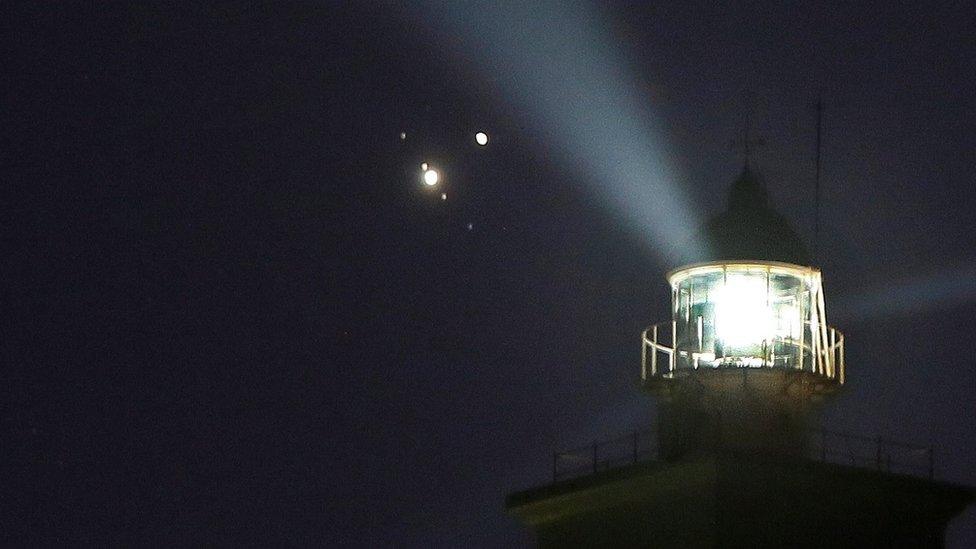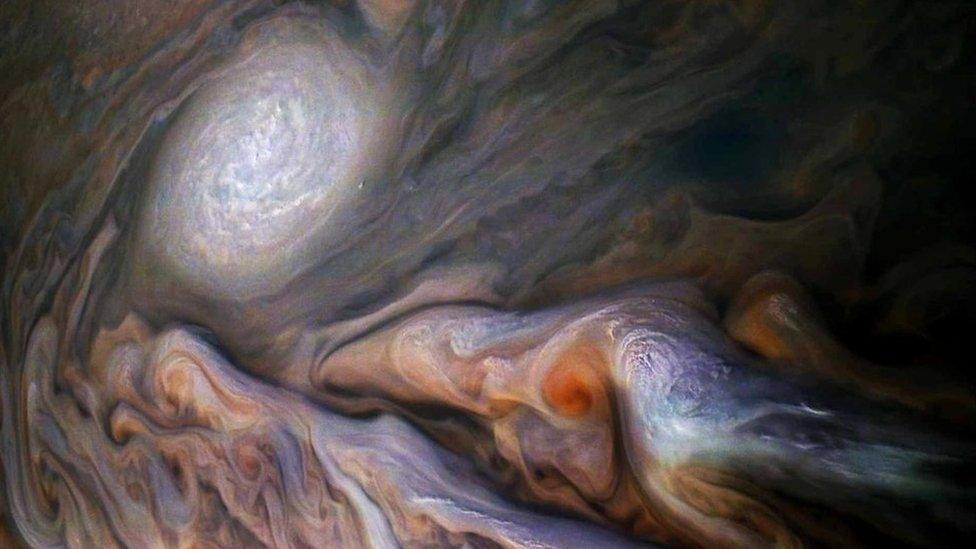Christmas star: Jupiter and Saturn align in the night sky
- Published
- comments

The planets often cross paths on their journey around the Sun, but this conjunction is unusual
Jupiter and Saturn have crossed paths in the night sky, appearing to the naked eye as a "double planet".
The timing of this conjunction, as the celestial event is known, has caused some to suggest it may have been the source of a bright light in the sky 2,000 years ago.
That became known as the Star of Bethlehem.
The planets have been moving closer together each night and reached their closest point on 21 December.
Keen stargazers in the UK have been keeping a close eye on the weather to avoid an astronomical disappointment.
"Any evening it's clear, it's worth grabbing a chance, because the weather doesn't look great," Dr Carolin Crawford from the University of Cambridge's Institute of Astronomy told the BBC.

The spectacle was captured around the world on Monday, including this image in southern Spain

The moon, Saturn and Jupiter formed a triangle over New York City

There is a theory that the conjunction of Jupiter and Saturn might be the "Star of Wonder"
Given a gap in the winter gloom, both planets would have appeared in the southwest sky, just above the horizon, shortly after sunset.

With binoculars, Jupiter's moons can also be seen; this image was captured in Nairobi by Lennox Fevre
Is this the return of the Star of Bethlehem?
Some astronomers and theologians think so.
As Prof Eric M Vanden Eykel, a professor of religion from Ferrum College in Virginia, pointed out in an online article, external the timing has led to a lot of speculation "about whether this could be the same astronomical event that the Bible reports led the wise men to Joseph, Mary and the newly born Jesus".
That is not just modern, festive speculation. The theory that the conjunction of Jupiter and Saturn might be the "Star of Wonder" was proposed in the early 17th Century by Johannes Kepler, a German astronomer and mathematician.
"2,000 years ago, people were a lot more aware of what was happening in the night sky," said Dr Crawford, "[so] it's not impossible that the Star of Bethlehem was a planetary alignment like this".
How rare is the event?
As planets cross paths on their journey around the Sun, conjunctions are not particularly rare, but this one is special.
Close-up images of Nasa's Jupiter mission
"Conjunctions are great things to see - they happen fairly often - but [for the planets to be this close] is quite remarkable," Prof Tim O'Brien, an astrophysicist from the University of Manchester, told BBC News.
The two planets - the largest in the Solar System and some of the brightest objects visible in the night sky - have not been this close to each other in a dark sky for 800 years.
Because of the timing of the planets setting in the southwest, Prof O'Brien said it had been necessary for stargazers to get out and observe the event as soon as the sky went dark.
"None of us is going to be around in another 400 years," he said, of the next observing opportunity.
Follow Victoria on Twitter, external
- Published7 October 2019

- Published13 December 2018
